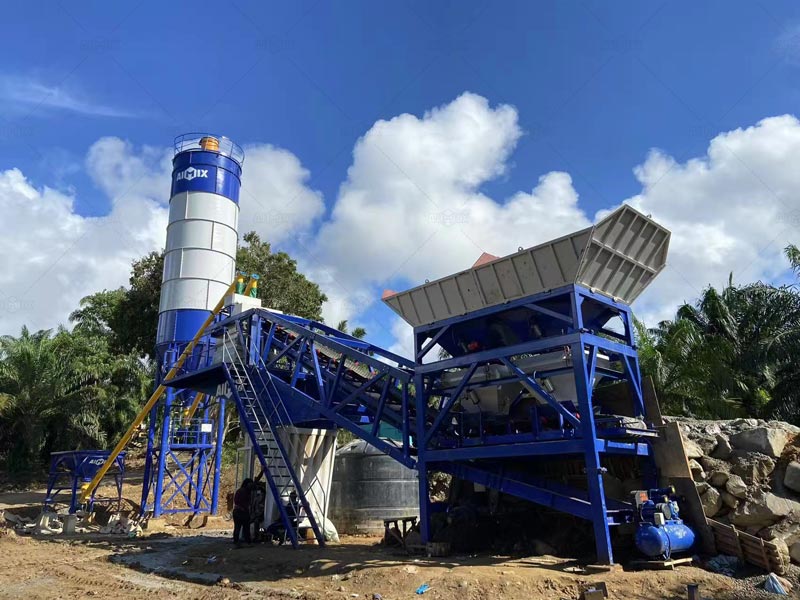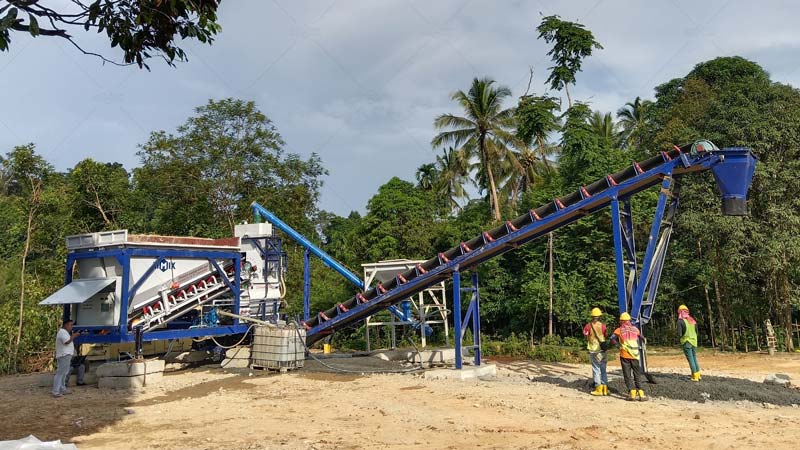Latin America’s construction industry is incredibly diverse—from remote mining roads in the Andes to fast-growing urban centers in Brazil and Colombia. In such a varied landscape, project needs differ dramatically, making equipment flexibility crucial. This is where the mobile concrete plant shines. Unlike traditional stationary systems, mobile plants offer high adaptability, quick setup, and the ability to move between jobs. In this article, we’ll explore the types of projects in the Latin American market where mobile plants deliver the most value.
Challenges in Latin American Construction Projects
Latin America faces unique challenges in infrastructure development. Many projects are located in remote areas with limited access to ready-mix suppliers. Harsh weather, mountainous terrain, and stretched transportation networks can significantly slow down traditional concrete delivery. Furthermore, rapid urbanization and government investment in rural development have increased the demand for flexible and efficient construction solutions.
A traditional concrete plant often requires extensive setup and infrastructure. In contrast, mobile concrete plants(planta de concreto movil) are designed to be installed quickly with minimal civil works—making them ideal for Latin American conditions.

Projects That Benefit Most from Mobile Concrete Plants
1. Road Construction in Remote or Mountainous Areas
Governments across Latin America are investing in rural road development to improve connectivity. Many of these projects are located far from existing concrete plants, making transportation costly and unreliable. A mobile concrete plant can be set up near the construction site, ensuring consistent and fresh concrete supply without logistical delays.
In countries like Peru, Bolivia, and Ecuador—where much of the terrain is mountainous—the mobility and compact footprint of mobile plants make them an essential asset.
2. Infrastructure for Mining and Energy Projects
Mining and energy developments in Chile, Argentina, and Colombia often occur in isolated locations with limited support infrastructure. These sites demand equipment that can be deployed rapidly and function independently. A small concrete plant or mobile batching unit can produce concrete on-site for foundations, tunnels, roadways, and auxiliary structures.
The portability of the plant ensures it can be relocated as the project progresses, minimizing waste and maximizing productivity.
3. Temporary or Fast-Track Housing Projects
Rapid urban expansion in cities like Bogotá, Lima, and São Paulo has led to high demand for low-cost housing. Mobile concrete plants allow developers to build large volumes of homes quickly, even in underdeveloped outskirts without stable concrete supply networks.
Since these projects are often time-sensitive and short in duration, investing in a mobile solution avoids the need for a permanent concrete plant for sale(planta de hormigon en venta), which might not be cost-effective for short-term use.

4. Disaster Relief and Emergency Reconstruction
Latin America is prone to natural disasters like earthquakes, floods, and hurricanes. In post-disaster scenarios, mobile plants enable the rapid construction of shelters, roads, and medical facilities. Governments and NGOs prefer mobile systems due to their speed, ease of deployment, and ability to function with limited support infrastructure.
For instance, after the 2016 earthquake in Ecuador, mobile plants were instrumental in rebuilding affected communities where traditional construction supply chains had been disrupted.
5. Medium-Sized Municipal Projects
Many municipalities across Latin America undertake medium-scale public works such as parks, schools, sidewalks, and drainage systems. A small concrete plant(planta de concreto pequeña) mounted on a trailer can meet the demand for such projects without the need for third-party suppliers or long transportation routes.
This not only reduces costs but also gives local governments better control over quality and scheduling.
Advantages of Mobile Concrete Plants in the Region
1. Minimal Site Preparation
Unlike traditional concrete plants(plantas de concreto Perú) that require fixed foundations and permanent utilities, mobile units can operate with minimal civil works. This allows them to be deployed in undeveloped areas without major upfront investment.
2. Quick Setup and Relocation
Mobile plants can often be installed within one or two days. Once a project is completed, they can be disassembled and moved to a new location—maximizing equipment utilization.
3. Cost-Effective for Short-Term Projects
For projects that last only a few months, purchasing a concrete plant for sale may not be financially viable. Mobile plants offer a lower investment threshold while still delivering high productivity. Some companies even offer rental models for additional flexibility.
4. Lower Transportation Costs
Producing concrete on-site reduces the need for expensive long-distance transport. This is particularly valuable in rural or rugged areas where delivery trucks may have difficulty accessing the jobsite.
Conclusion: Mobile Plants Fit the Region’s Needs
From highways through the Andes to post-disaster reconstruction in coastal areas, Latin America’s diverse geography and infrastructure challenges make mobile concrete plant solutions especially valuable. These plants provide a smart and flexible alternative to traditional setups—cutting costs, reducing delays, and enabling quality control on-site.
Whether you’re a contractor looking for a concrete plant for sale or a public agency working on infrastructure expansion, mobile systems deliver performance and convenience across the Latin American market. For smaller-scale needs, a small concrete plant may also offer the right balance between output, mobility, and investment.
In a region where adaptability is key, mobile concrete plants are not just an option—they’re a strategic advantage.